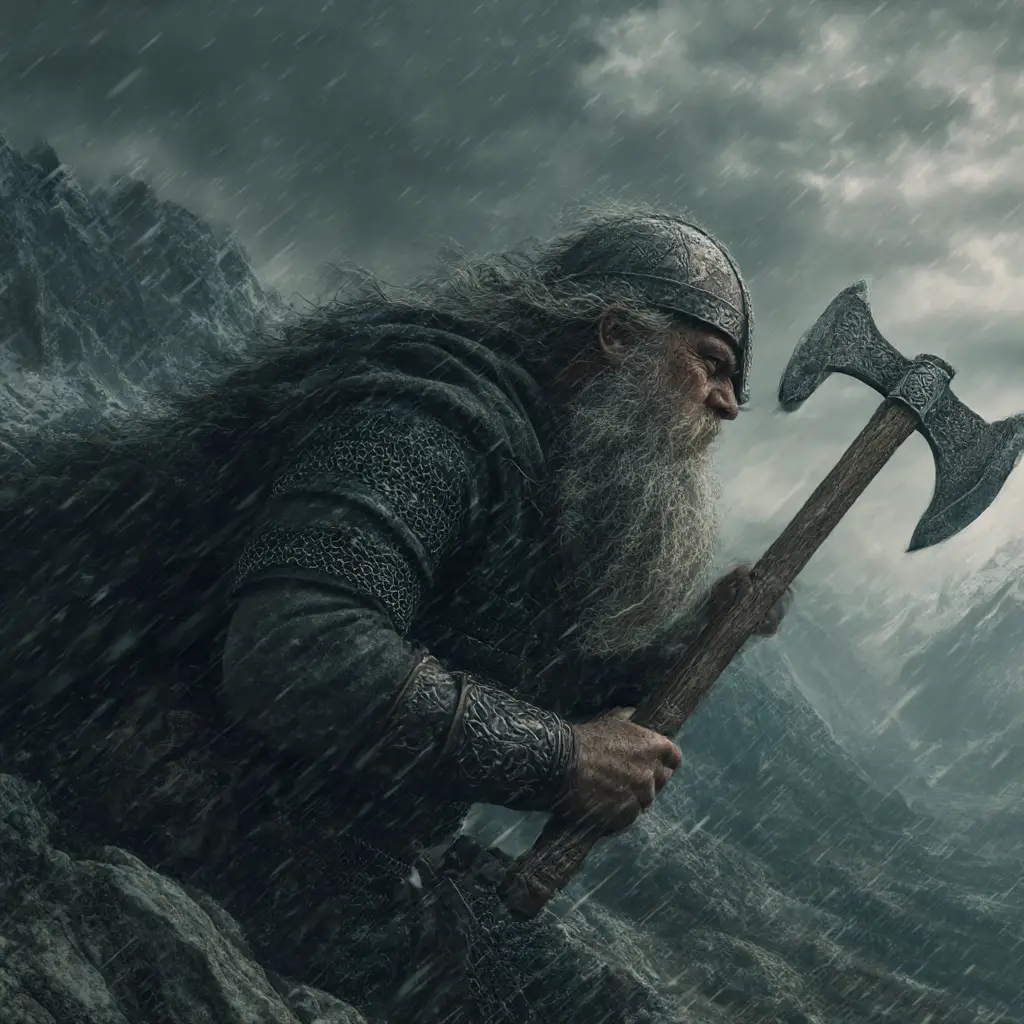Egil Skallagrímsson – Viking Warrior, Skald, and Outlaw
Egil Skallagrímsson stands as one of the most compelling figures of the Viking Age—a fierce warrior, master poet, and complex character whose life is vividly captured in Egil’s Saga. Born around 910 AD in Iceland to the powerful Skallagrím family, Egil was descended from Norwegian settlers and grew up during a time of conflict, exploration, and shifting loyalties across the Norse world.
Early Life and Heritage
Egil was the son of Skallagrím Kveldúlfsson, a strong and formidable chieftain who had fled Norway due to conflict with King Harald Fairhair. From an early age, Egil displayed signs of exceptional strength, a volatile temper, and a remarkable gift for poetry. According to the saga, he composed his first poem at the age of three, an early indication of his status as a skald—a respected and often powerful poet in Norse society.
Warrior and Raider
Throughout his life, Egil took part in many battles and Viking raids, travelling through Norway, England, and across the North Sea. He fought in brutal confrontations, often driven by personal vendettas, family feuds, or political disputes. Egil’s combative nature and readiness to act with violence placed him at odds with kings and jarls alike, most notably King Eirik Bloodaxe of Norway and his wife Gunnhild.
One of Egil’s most famous episodes involved composing a drápur—a lengthy praise poem—to save his own life. Captured and brought before King Eirik, Egil recited Höfuðlausn (“Head Ransom”), a poem of such quality that the king was compelled to spare him. This moment exemplifies the unique Norse tradition in which poetic skill could wield as much influence as a sword.
Poet and Saga Hero
As a skald, Egil was second to none. His verses are among the oldest surviving examples of Norse poetry and show a powerful command of language, emotion, and form. His poems range from fierce battle songs to deeply personal elegies, such as Sonatorrek, written after the loss of his sons. This lament is one of the most poignant pieces of Old Norse literature, reflecting themes of grief, fate, and resilience.
Egil’s Saga, attributed to the 13th-century writer Snorri Sturluson, presents him as both a brutal warrior and a deeply thoughtful man. The saga explores his loyalty to family, his clashes with authority, and his mastery of language. It also delves into themes of honour, vengeance, and the thin line between civilisation and savagery.
Wife and Children
According to Egil’s Saga, he married a woman named Asgerdr Björnsdóttir, who came from a noble and powerful family. She was the daughter of Björn the Easterner and the granddaughter of the famed Aud the Deep-Minded, a respected settler and matriarch in Icelandic history.
Egil and Asgerdr had several children, including:
- Thorstein Egilsson – Perhaps the most well-known of Egil’s children, Thorstein became a respected and peaceful chieftain. He is featured in his own saga, The Saga of Thorstein Egilsson, which portrays him as honourable and level-headed, quite different from his more fiery father.
- Bödvar Egilsson – One of Egil’s sons who tragically drowned, leading to the composition of Sonatorrek, a powerful and emotional lament written by Egil mourning the loss.
- Thorgils and other children – Some sources mention additional sons or daughters, though details about them are limited.
Egil’s relationships with his family, especially the loss of his sons, are a central part of his story and show a more personal, emotional side to his character beyond the battles and poems.
Appearance
According to Egil’s Saga, Egil Skallagrímsson had a striking and unusual appearance, even by Viking standards. The saga offers a detailed, though stylised, description that paints him as physically imposing and somewhat fearsome:
- Large and strong – Egil was described as tall, broad, and immensely strong, even from a young age. His physical power was often compared to that of his father and grandfather, both known for their strength and size.
- Balding with a thick skull – He was said to be bald or have a receding hairline from a relatively early age. His skull was notably large and unusually shaped, so much so that after his death, his bones were reportedly dug up and examined—and the saga claims his skull was so tough it could not be cracked with an axe.
- Black eyes and bushy eyebrows – His eyes were black or very dark, and he had prominent, bushy eyebrows, contributing to a fierce, intimidating expression.
- Dark hair and a rugged face – Egil likely had dark hair (though this is inferred), and his features were considered rough and not conventionally handsome. In fact, the saga suggests he was thought of as ugly, even by some of his own family.
- Fearsome presence – Overall, his appearance reflected his personality: wild, powerful, intense, and not easily forgotten.
This physical description, combined with his poetry and warrior skills, adds to the legendary image of Egil as a man who straddled the line between civilisation and chaos.
Egil Skallagrímsson is remembered not just as a fearsome Viking but as a symbol of the contradictions at the heart of Norse culture: strength and sensitivity, violence and artistry, honour and defiance. His life story offers a window into the world of early Icelandic settlers, Viking warfare, and the enduring power of poetic expression.



